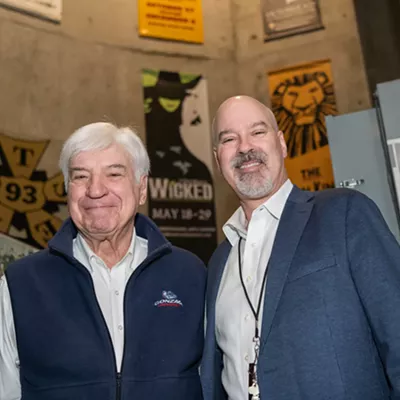In April I had the chance to spend some time in Pioneer Courthouse Square in Portland with a couple thousand locals. We were singing, and there were cupcakes. It's true: Led by the Square's house band, Pink Martini, the civic sing-along was to mark the 30th birthday of their beloved Square — aka "Portland's Living Room."
I've come to admire the Square over the past year, as I've been studying successful public spaces for the Riverfront Park Master Plan. The day after Thanksgiving, I was among the thousands to see the holiday tree get lit up. And in October I spent a morning with Jennifer Polver, the Square's executive director, learning how it has become Portland's most active space.
Pioneer Square is a great inspiration, but it's not comparable to Riverfront Park — it's a single city block, all hardscape, while we have 100 acres with huge swaths devoted to greenspace. Still, Pioneer Square stages more than 300 events every year, and as I dug deeper, I found the secret to their success: smart, entrepreneurial, focused management.
When the Square opened in 1984, they did something a little weird: Portland took management out of City Hall and created an independent nonprofit to manage the downtown park. In our advisory committee report, we recommended that our Park Board consider making a similar switch. While not as visible as recovering the Pavilion, how we manage a new, improved Riverfront Park may be the most crucial piece of the puzzle.
The Square's staff of seven works every day to make events happen. And Pioneer Square doesn't leave much revenue on the table, tapping nontraditional income streams, like event sponsorships. They even lease space on the Square to Starbucks and KGW-TV.
There are many ways to manage important public spaces: The High Line in New York City has the Friends of the High Line; Balboa Park in San Diego is a conservancy; Seattle Center is managed by its own distinct city department. But in Spokane we have not evolved. We continue to run our most important, most complicated public space within the overall parks management that has to juggle it along with golf courses and pools, all the while subject to shifting winds in funding and politics.
Our committee asked the question: How do we draw more visitors and make Riverfront Park more dynamic? The answer is just downstream in Portland, and they've been doing it right for 30 years now. ♦
All this month, I'll be devoting my column to the future of Riverfront Park. To read all the advisory committee recommendations, visit riverfrontparkmasterplan.org. Next week: Return on investment.
























